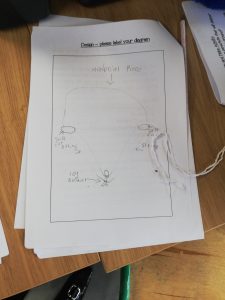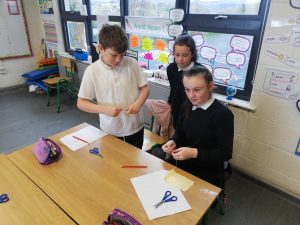In celebration of Science Week 2019 we decided to carry out another STEM activity! We love designing and making and wasted no time in deciding what STEM activity to try this time. We have been learning about World War 2 this month and last week we watched some footage of the D – Day parachute landings in Normandy in 1944. We wanted to learn some more about how the parachutes that the soldiers used worked and what they were made from.
We looked at various video clips and found out that the parachutes were often made from silk and nylon. We were surprised as we thought silk was a soft material that wouldn’t have the strength to be used in a parachute.
We then listed materials that we knew were strong, things like rubber, rope and leather. This led us to ask ‘how does a parachute work?’ Parachutes need to be able to catch air inside them to make them work so some of these options seemed a little too heavy. We learned about air resistance and how it slows things down that are moving fast through the air. Parachutes need to make sure that enough air resistance will be created to work successfully.
We completed our STEM booklet and then carried out our design and make activity. We needed to test the effectiveness of different materials acting as parachutes – we tested felt, tissue, rubber and plastic.
Each group received the same amount of materials and time to complete the activity in. We only had one variable – the material – to ensure we completed a fair test.
We received:
- one piece of material
- 1 metre of Sellotape
- 2 metres of string
- 4 pairs of scissors
- a weight (a Lego toy soldier)
We had 20 minutes to make our parachutes!
Our results were interesting. We concluded that the parachute made from rubber took the longest to reach the ground. This was followed closely by the parachute made from felt. Both of these designs were dome – shaped and so could catch more air. We think that the shape and amount of material used really affected the success of the parachutes. We also think the weight of the material used is extremely important.
Another successful STEM activity completed and lots of design and make and Maths skills practised!













